 I have been using CAD to make different models and designs since I was in high school. It’s so satisfying to make different parts in a program that you can then bring to life with 3D Printing. In the OPIM Innovation Space, several 3D printers have some really special capabilities and I wanted to put my skills as a designer, and the abilities of the printer, to the test.
I have been using CAD to make different models and designs since I was in high school. It’s so satisfying to make different parts in a program that you can then bring to life with 3D Printing. In the OPIM Innovation Space, several 3D printers have some really special capabilities and I wanted to put my skills as a designer, and the abilities of the printer, to the test.
The Makerbot Z18 is easily one of the largest consumer grade printers available. It can print within a 18 by 12 by 12 inch build volume. That’s one and a half square feet! I challenged myself to build a model of UConn’s School of Business and then 3D print it to the largest size possible.
I started on Google maps and traced out the School of Business onto a template. Then I walked outside the school and took pictures of its notable features. It took several days for me to capture the details of the building, such as cutting out windows and creating the overhanging roof, in order to make the building an accurate model. I even hollowed out the model so that it could accomodate a microcontroller or LEDs if we wanted to use some IoT technology to upgrade the project.
Printing the behemoth of a project was a challenge. The entire design printed on its side so that it could use nearly all of the Z18’s build volume, and even at full efficiency it was estimated to take 114 hours to print. I contemplated cutting it into two pieces and printing them separately, but it would be so much cooler to use the full size of the printer. It took several tries before I was able to print the School of Business in one shot. After several broken filament rolls and failed prints, the entire school was finished.
This project gave me great insight into the manufacturing problems faced by using 3D printing technology to produce exceedingly large parts. This model used about 3 pounds of filament and really pushed the limits of the technology. A miniature School of Business was not only a great showcase for the OPIM Department and for OPIM Innovate, but it was a testament to the future of technology. Maybe in the future buildings will actually be 3D printed. It will be super exciting to see how this technology, and the CAD softwares that compliment it, evolve moving forward.
By: Evan Gentile, Senior, MEM Major
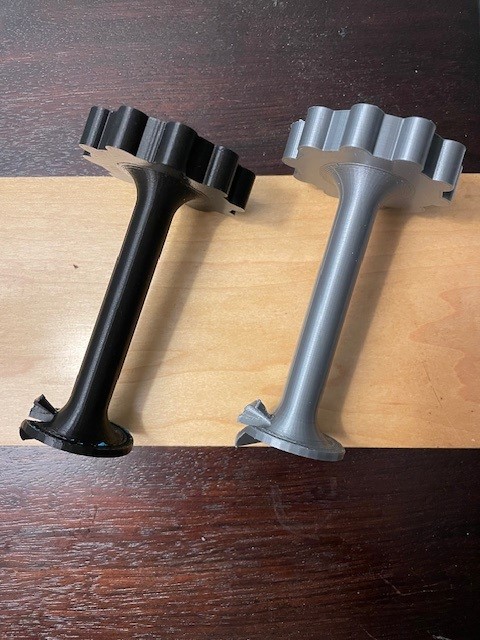
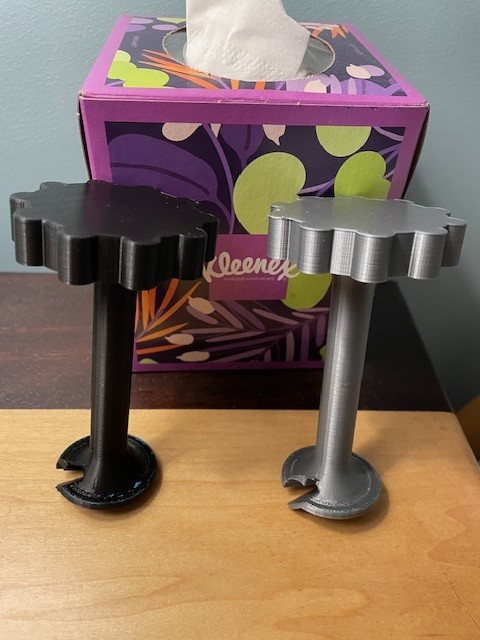
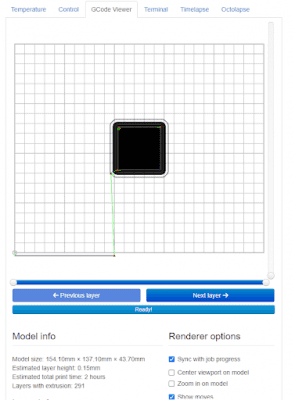 What started out as a simple way to monitor our 3D prints turned into a full blown remote control system for our Prusa i3 MK3s! This setup produces stunning timelapses that make the print look like it is rising from the print bed on its own.
What started out as a simple way to monitor our 3D prints turned into a full blown remote control system for our Prusa i3 MK3s! This setup produces stunning timelapses that make the print look like it is rising from the print bed on its own.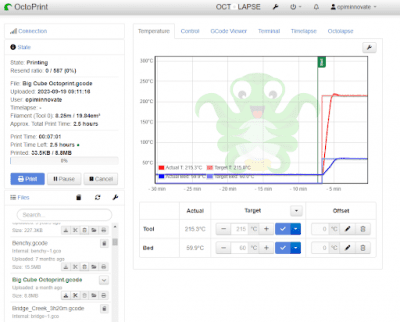


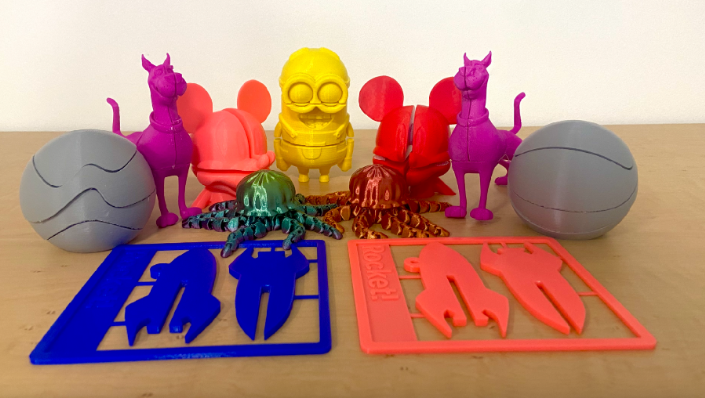
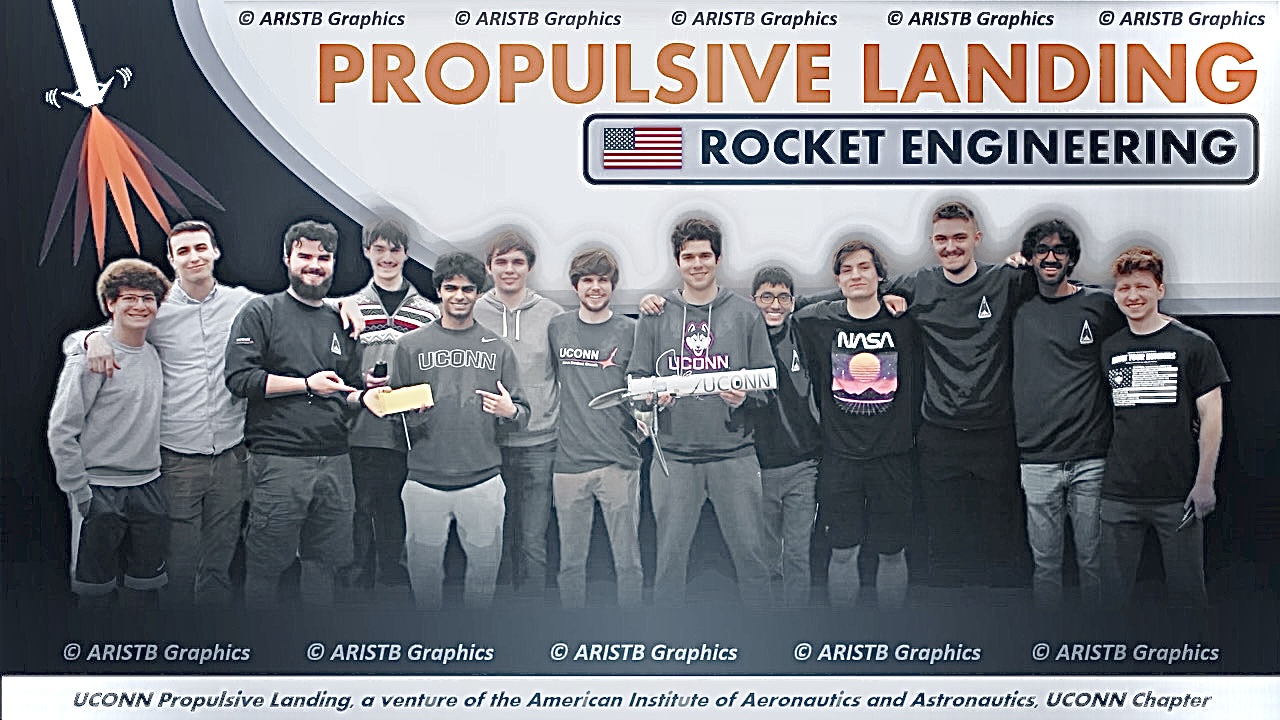
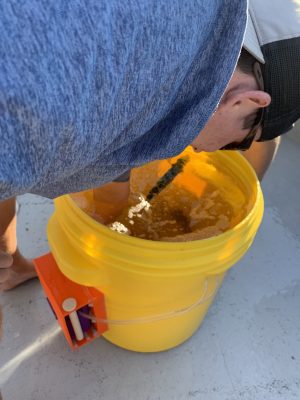
 In the OPIM Innovate lab, I was able to create a catapult for a project in my ENGR1000 class. OPIM Innovate has all of the resources necessary to prototype, print, and assemble a project such as this. The necessary Solidworks skills I used for this project can be learned through the Tech Tracks that the lab offers. The 3D printers available in the lab are also great to test out your prototype in the real world. While my first design for the project worked out on paper, I was able to make improvements to it by seeing the real physical thing after printing it out on the Prusa MK3. OPIM Innovate is a great space with a lot of tools along with very helpful and informative staff to help increase your knowledge.
In the OPIM Innovate lab, I was able to create a catapult for a project in my ENGR1000 class. OPIM Innovate has all of the resources necessary to prototype, print, and assemble a project such as this. The necessary Solidworks skills I used for this project can be learned through the Tech Tracks that the lab offers. The 3D printers available in the lab are also great to test out your prototype in the real world. While my first design for the project worked out on paper, I was able to make improvements to it by seeing the real physical thing after printing it out on the Prusa MK3. OPIM Innovate is a great space with a lot of tools along with very helpful and informative staff to help increase your knowledge.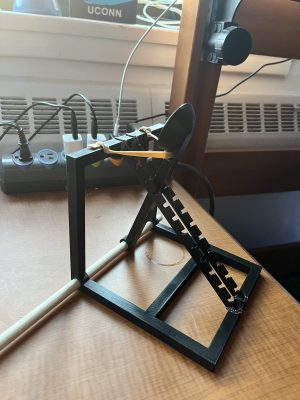
 I was excited to find out that a Writing Center tutor was kind enough to donate a Keurig to the office, putting lifegiving caffeine in the hands of tutors without the cost of running down to Bookworms Cafe. Alas, it was disturbing to see that the K-Cups used by the machine were being stored in a small basket. Now, I’m not the Queen of England or anything, but I have my limits. The toll on my mental health taken by watching the cups lazily thrown into a pile in the woven container was enough to force me to take action. With less than half an hour of active work, I was able to turn the Writing Center logo, a stylized “W”, into a three-dimensional model complete with holes designed to hold K-Cups.
I was excited to find out that a Writing Center tutor was kind enough to donate a Keurig to the office, putting lifegiving caffeine in the hands of tutors without the cost of running down to Bookworms Cafe. Alas, it was disturbing to see that the K-Cups used by the machine were being stored in a small basket. Now, I’m not the Queen of England or anything, but I have my limits. The toll on my mental health taken by watching the cups lazily thrown into a pile in the woven container was enough to force me to take action. With less than half an hour of active work, I was able to turn the Writing Center logo, a stylized “W”, into a three-dimensional model complete with holes designed to hold K-Cups.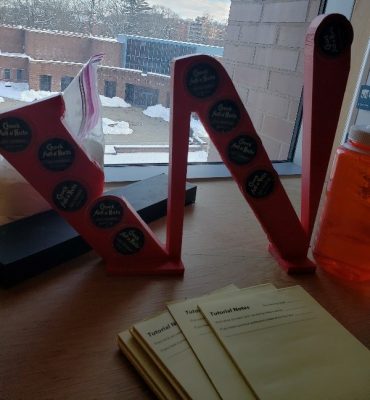 But there’s another reason I decided to turn my strange idea into a reality: I wanted to highlight the range of resources offered on campus to UConn students. The OPIM Innovate space and the Writing
But there’s another reason I decided to turn my strange idea into a reality: I wanted to highlight the range of resources offered on campus to UConn students. The OPIM Innovate space and the Writing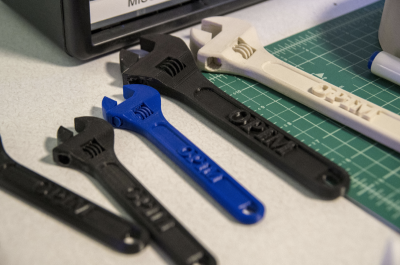 One of the most used features of the OPIM Innovate lab is the Fused Deposition Modeling (FDM) 3D printer. We are always interested in new innovations in 3D printing and what students like to use the 3D printers for. We were lucky to have a chance to show a big name company upcoming technologies we had in the space.
One of the most used features of the OPIM Innovate lab is the Fused Deposition Modeling (FDM) 3D printer. We are always interested in new innovations in 3D printing and what students like to use the 3D printers for. We were lucky to have a chance to show a big name company upcoming technologies we had in the space. I have been using CAD to make different models and designs since I was in high school. It’s so satisfying to make different parts in a program that you can then bring to life with 3D Printing. In the OPIM Innovation Space, several 3D printers have some really special capabilities and I wanted to put my skills as a designer, and the abilities of the printer, to the test.
I have been using CAD to make different models and designs since I was in high school. It’s so satisfying to make different parts in a program that you can then bring to life with 3D Printing. In the OPIM Innovation Space, several 3D printers have some really special capabilities and I wanted to put my skills as a designer, and the abilities of the printer, to the test.